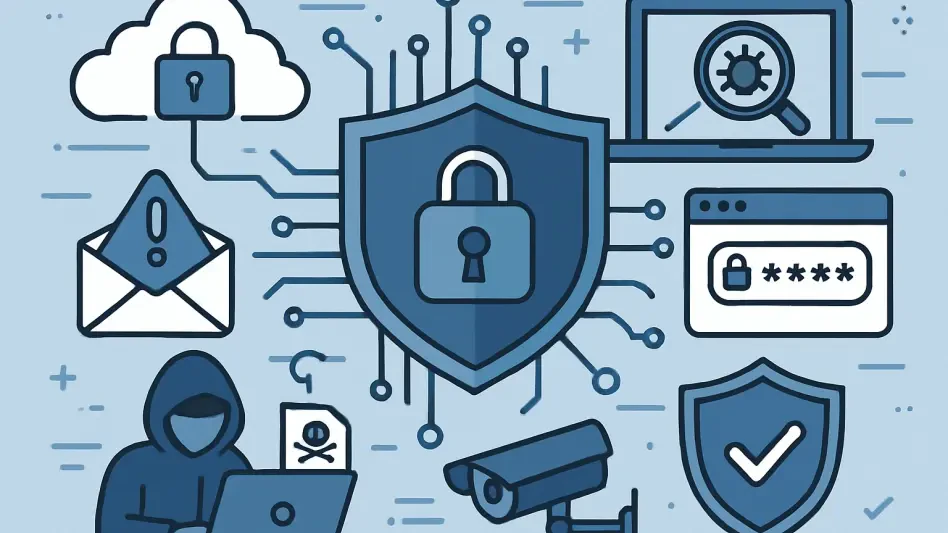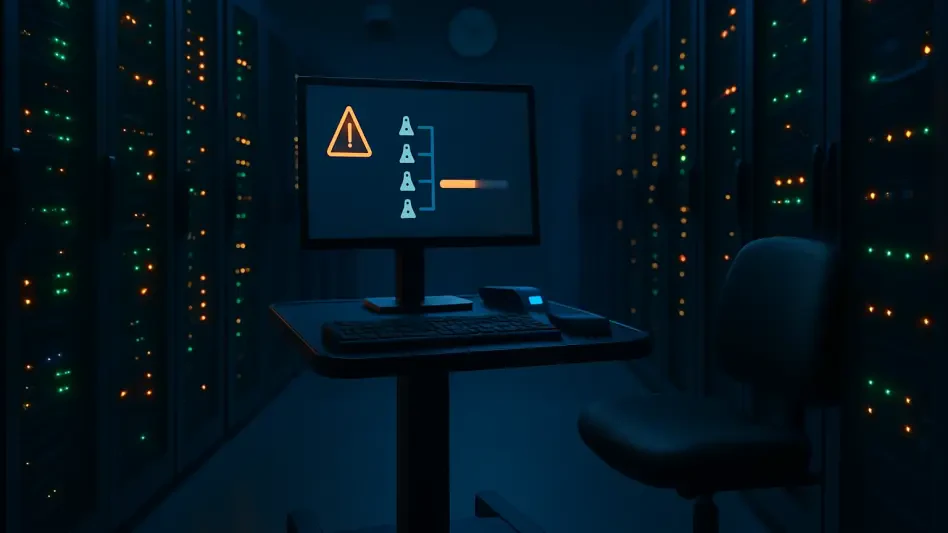In an increasingly digital world, where a single breach can cost millions and shatter consumer trust, the cybersecurity market stands at a critical juncture in 2025, facing challenges that demand urgent attention. Organizations across industries are grappling with sophisticated threats—ransomware, phishing, and insider vulnerabilities—that evolve faster than many defenses can adapt. With global cybercrime damages projected to hit unprecedented levels, the urgency to prioritize effective cybersecurity controls has never been clearer. This market analysis delves into groundbreaking insights from a leading risk management firm’s recent study through its Cyber Risk Intelligence Center, spotlighting the most impactful controls shaping the cybersecurity landscape. By dissecting current trends, data-driven metrics, and future projections, this examination aims to equip businesses with the strategic foresight needed to fortify their defenses against an ever-shifting threat horizon.
Dissecting Cybersecurity Market Trends and Projections
The Shift to Quality Over Quantity in Control Deployment
The cybersecurity market in 2025 reflects a mature landscape where the mere presence of controls no longer suffices as a competitive edge. Data drawn from thousands of organizational self-assessments reveals that adoption rates for foundational tools like multi-factor authentication (MFA) and endpoint detection and response (EDR) hover near 90-100%. The differentiating factor now lies in the depth and quality of implementation—whether MFA resists phishing attempts or EDR covers every device in an enterprise. This trend underscores a broader market pivot toward evidence-based investments, where metrics like signal strength, which measures a control’s correlation with reduced breach likelihood, guide budgetary decisions. As organizations refine their strategies, vendors offering customizable and scalable solutions are likely to see heightened demand over the next two years.
Incident Response Planning as a Market Anchor
Among the standout controls shaping market dynamics, incident response planning emerges as a cornerstone for risk reduction. Its high signal strength indicates a strong link to lower breach probabilities, positioning it as a priority for enterprises aiming to minimize operational disruptions. Market analysis shows that firms with regularly tested and updated plans gain a competitive advantage, as they can respond swiftly to incidents, preserving customer trust and regulatory compliance. However, a significant portion of smaller businesses still lag in execution, often due to resource constraints, creating an opportunity for managed service providers to offer tailored incident response solutions. Projections suggest that demand for such services will grow sharply from 2025 to 2027 as cyber threats intensify.
Endpoint Detection and Response Driving Technological Adoption
Another pivotal trend is the market’s emphasis on comprehensive EDR deployment, with data indicating that full coverage across workstations and laptops maximizes risk mitigation. Each incremental increase in deployment—such as a 25% jump—translates to measurable reductions in breach likelihood, fueling adoption among mid-sized and large enterprises. Advanced EDR features, like blocking malicious code execution, further enhance its appeal, driving innovation among cybersecurity vendors to integrate automation and machine learning. While budget limitations hinder smaller players, the market is witnessing a surge in affordable, cloud-based EDR solutions to bridge this gap. Looking ahead, EDR is expected to remain a dominant segment, with sustained growth as endpoint-targeted attacks proliferate.
Multi-Factor Authentication Evolving into a Sophisticated Standard
MFA, once a market differentiator, has become a baseline control, with near-universal adoption shifting focus to sophistication in 2025. The market now rewards phishing-resistant configurations and enforcement across all systems, as basic setups prove vulnerable to modern bypass tactics. Regional variations also influence trends—European firms, spurred by stringent regulations like GDPR, often lead in advanced MFA adoption compared to other markets. This creates a bifurcated demand landscape, where vendors must cater to both cutting-edge and foundational needs. Future projections point to increased integration of biometric and adaptive authentication technologies, positioning MFA as a dynamic control that will continue evolving through 2027.
Emerging Automation and Regulatory Pressures Shaping Investments
Looking beyond specific controls, the cybersecurity market is increasingly shaped by automation and regulatory forces. Automated processes in vulnerability management and threat detection are gaining traction, enabling firms to close security gaps faster and reduce human error. Simultaneously, tightening global data protection laws are pushing organizations to adopt comprehensive control frameworks to avoid hefty fines. Industry forecasts indicate that artificial intelligence will play a larger role in tools like security information and event management (SIEM), enhancing real-time threat intelligence capabilities. However, scalability and cost concerns remain barriers, suggesting that market leaders will be those who balance innovation with accessible pricing models over the coming years.
Reflecting on Cyber Market Insights for Strategic Growth
Looking back, the analysis of 2025’s cybersecurity market paints a vivid picture of a sector in transition, where effectiveness and adaptability define success. The emphasis on quality deployment over mere adoption of controls like incident response planning, EDR, and MFA highlights a maturing industry that values precision in execution. Emerging trends such as automation and regulatory compliance further underscore the complex interplay of technology and policy in shaping organizational defenses. For businesses, the path forward involves leveraging data-driven metrics like signal strength to prioritize investments, ensuring resources target high-impact areas. Partnerships with vendors offering scalable, innovative solutions also emerge as a vital strategy to stay competitive, setting the stage for resilience in an increasingly hostile digital environment.








